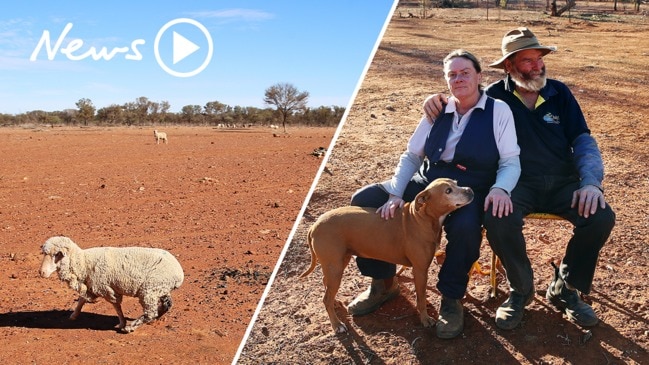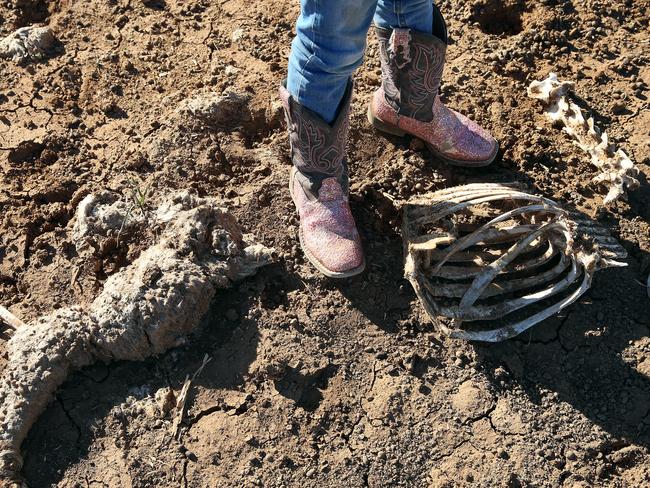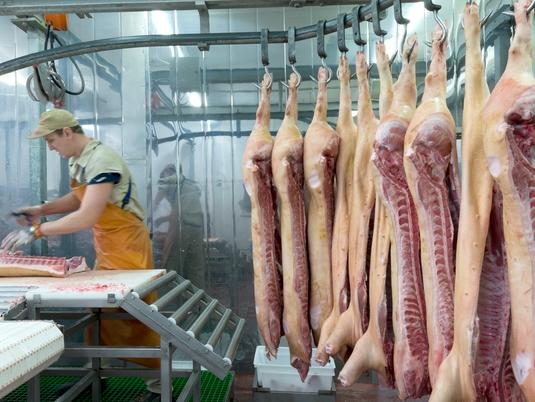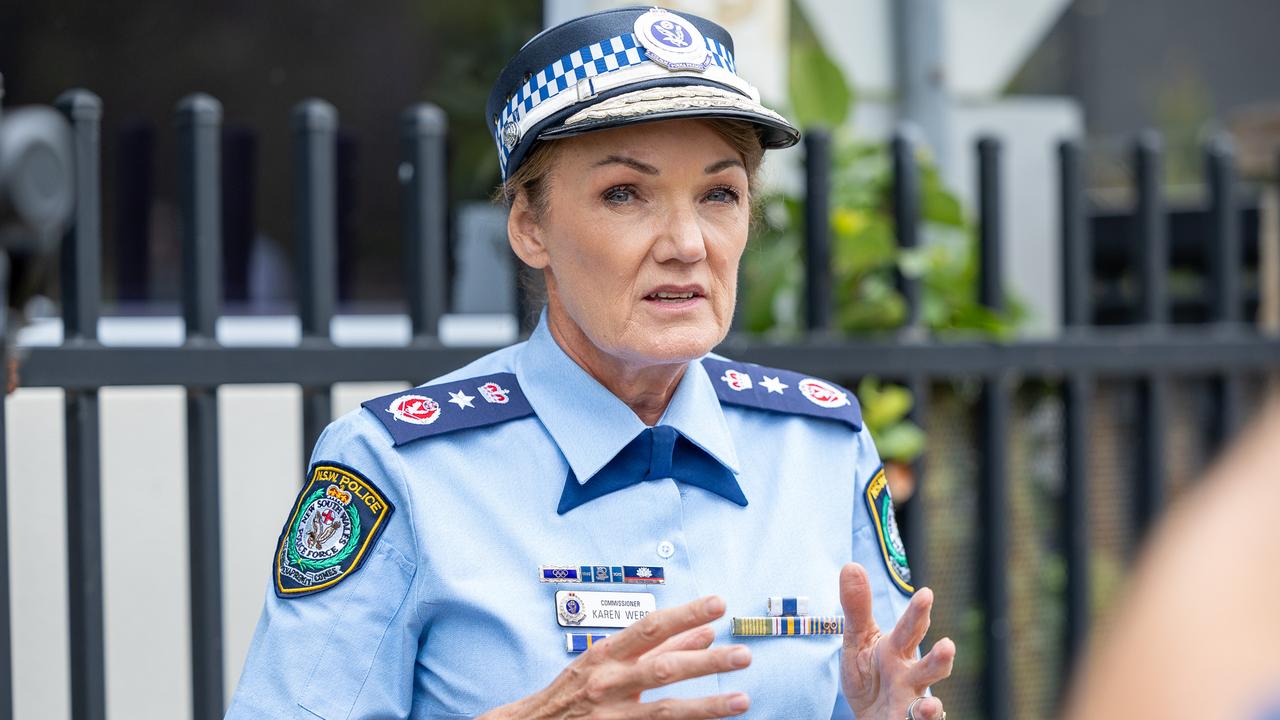Butcher Anthony Puharich warns lamb could soon be ‘delicacy’ item
The drought is now the worst on record in the regions responsible for producing the majority of the state’s beef, lamb, wheat and cotton, and conditions are tipped to worsen. And top butcher Anthony Puharich warns common cuts could soon be delicacy items.

NSW
Don't miss out on the headlines from NSW. Followed categories will be added to My News.
The drought is now the worst on record in the regions responsible for producing the majority of the state’s beef, lamb, wheat and cotton, and conditions are tipped to worsen.
Farms around Armidale, Moree, Scone, Coonabarabran, Walgett and Collarenebri have all recorded their driest 24-month stretch in history, according to the Bureau of Meteorology (BOM).
“Since April 2017 around 70 per cent of the State has had rainfall totals in the lowest 10 per cent of all similar periods on record,” a BOM spokesman said.
“Average to above average rainfall received across some areas during autumn has not been enough to remove long-term rainfall deficiencies.”
Across the state, 97.1 per cent of the landmass is in one of three drought categories that range from intense drought (13 per cent), drought (22.6 per cent) and drought affected (61.5 per cent).

The current drought is officially the worst since European settlement and worse than the notorious Millennium drought which lasted from 2001 to 2009, according to scientists from Australian National University (ANU) who analysed data from NASA’s new water-tracking satellites.
There was less water in the landscape in northern and north western NSW in 2018 than there was during the Millennium drought at the end of 2009, according to the ANU study.
Gone are the days when families could afford to sit down to a lamb roast on Sundays, with a top Sydney butcher warning the drought has made lamb a meal only for special occasions.
Fourth-generation butcher Anthony Puharich, who owns Vic’s Meat and world-famous boutique butcher Victor Churchill in Woollahra, said the drought’s had a “huge impact” on increasing meat prices.
“The drought was at the front of everyone’s mind last year … it’s still as real and grim as ever,” Mr Puharich said.
“Meat prices are out of control. You have to prepare yourself to eat less meat if you want to eat the same good quality.”


LAMB
2018: Lamb cutlets $40-50/kg
Now: Lamb cutlets $60-70/kg (45pc increase)
“The average punter needs to get ready for lamb — something we grew up eating and loving every Sunday when mum made a roast — to become a delicacy only eaten on special occasions, if things continue as they are,” Mr Puharich said.
“My father’s been in this industry for 50 years, 40 in Australia, and he’s never seen prices anything like this.”
A year ago the highest price an abattoir had paid for a lamb was $260 but last week a lamb sold for $360 at a sale in Corowa, on the Victorian border.
Demand for lamb is still high but farmers forced to sell livestock they can’t afford to feed has seen the national herd hit 65.8 million, which is down from 100 million 20 years ago.
BEEF
2018: Rump steak $15-18
Now: Rump steak $24-27 (55pc increase)
“Lamb prices are out of control but things are grim on the beef and pork front as well,” Mr Puharich said.
“A couple of weeks ago there was an outbreak of Mad Cow (disease) in Brazil,
“Australia’s seen as the only proper, clean, safe source of meat in the world and the whole world wants it.”
Further increases in the price of meat are expected when the drought breaks and graziers who have slaughtered their core breeding stock compete with consumers.

PORK
2018: pork belly $12-15/kg
Now: pork belly $20-22/kg (55pc increase)
“China is shitting itself because they’ve wiped out hundreds of thousands of sows from African Swine Flu and they have a huge shortage of protein,” Mr Puharich said.
So China is increasing its imports of Australian pork, he said.
But prices are also up because graziers without green pasture have been forced to feed livestock scarce and increasingly costly hay and grain.
The cost of grain to feed pigs has sky-rocketed in the past year, from about $200 a tonne to between $390 and $550 a tonne.
CHICKEN
2018: breast and thigh $12-14/kg
Now: breast and thigh $15-16/kg (20pc increase)
“That’s not the price for top quality chicken, that’s the more intensively farmed chicken that grows in 30 days and is relatively cheap to produce — which is why the price increase isn’t as significant,” Mr Puharich said.
“In the 60s Australians were eating 7kg of chicken, now we’re eating closer to 50kg, which works out at about a kilo of chicken per person per week.
“We eat more chicken than all the red meat combined, so it has better economies of scale.”
FRUIT AND VEGETABLES
No price rise.
Fruit and vegetable retail prices have remained largely unchanged forcing NSW growers — who face stiff competition from interstate and overseas — to narrow their margins.
According to fruit and vegetable wholesaler Shaun McInerney, who owns Fresh Fellas at Sydney Markets in Flemington, growers are being squeezed as the big dry drags on.
“A lot of fruit and vegetable growers are incurring the huge cost of buying water but overall the volume hasn’t dropped, so there aren’t any shortages,” he said.
Fruit and vegetable growers aren’t as susceptible to drought conditions as livestock graziers are, as their farms are typically closer to the coast and can be more effectively irrigated in greenhouses.
Originally published as Butcher Anthony Puharich warns lamb could soon be ‘delicacy’ item



